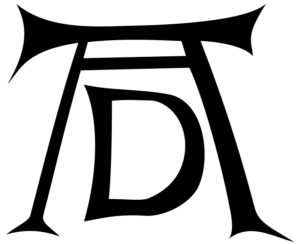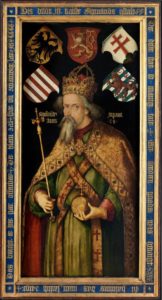Albrecht Dürer (1471 -1528) and Hungary

We know the famous artist’s life quite well but I would like to point at his Hungarian connections in this article.
The ancestors of Albrecht Dürer derived from a Hungarian village called Ajtós, near Gyula Castle. The family used the name of the village that they owned as proof of their Hungarian nobility. Ajtós was translated into German as Türer or Dürer, “door” in English.

Dürer’s father was also called Albert, he was a goldsmith in Gyula, Hungary. His father was Anton Ajtósi, a goldsmith, and his mother’s name was Erzsébet. Albert was born in Gyula about 1427 and died in 1502 in Nürnberg.

The family was also dealing with breeding horses and cattle on the fields near Ajtós. Albert’s brothers were called László, János while his sister was Erzsébet. László became a leather belt maker while János became a Catholic priest in (Nagy)Várad. László’s son, Niklas Unger became a goldsmith and settled down in Köln.
While learning the art of his father’s trade, Albert arrived in Nürnberg in 1444 where he met a famous goldsmith called Hieronymus Holper. It was the time when he began to use his family name Dürer which he translated into German from Ajtósi.

Albert traveled to the Netherlands and probably visited Burgundy, too. He returned to Nürnberg in 1455 where Hieronymus Holper employed him as his apprentice. Albert married Holper’s 15-year-old daughter, Barbara in 1467. He became a goldsmith master in 1568 and opened his shop in Nürnberg. Barbara was 25 years younger than him and gave birth to 18 children but only three of them could grow up: Jr. Albrecht Dürer, the painter (1472-1528), Endres, the goldsmith (1484-1555), and Hans, the painter (1490-1534). As for Barbara Holper, she may have had some Hungarian roots as her mother was called Kinga Öllinger, born in Sopron, Hungary. Albert Dürer / Ajtósi died of dysentery in 1502 and his wife closed her eyes in 1514.

We know that Jr. Albrecht Durer introduced classical motifs into Northern art, through his knowledge of Italian artists and German Latinists, thus securing his reputation as one of the most important figures of the Northern Renaissance.
What could he have preserved from his family’s Hungarian ties? He did use his Hungarian nobility and coat of arms but he was serving Emperor Maximilian I (1459-1519) and for him, it may not have been too lucky to boast about his Hungarian roots. Habsburg Maximilian was the great enemy of Hungarian King Matthias and he was the one who reached his hands („While others make wars, you just marry, happy Austria” as the saying went) for the Hungarian throne, after all.

Did Dürer remember the Hungarian language? Or elements of Hungarian saber fencing? We don’t even know whether he was in touch with those of his family members who had stayed in Hungary, in Gyula, and Várad. It is an exciting task for researchers. Yet, Albrecht Dürer was lucky to have stayed in Nürnberg. Gyula fell to the Turks in 1566 and we may never learn how many talented members of the Dürer / Ajtósi family were slain or enslaved. Had his father stayed in Hungary, we would be poorer now. You can read more about Gyula Castle here:
https://www.hungarianottomanwars.com/ottoman-occupied-lands/gyula/

In all cases, the origin of Albrecht Dürer can point to the Kingdom of Hungary where the Renaissance first appeared north of the Alps and spread to German and other northern lands.
Dear Readers, I can only make this content available through small donations or by selling my books or T-shirts.
If you like my writings, please feel free to support me with a coffee here:
You can check out my books on Amazon or Draft2Digital, they are available in hardcover, paperback, or ebook:
https://www.amazon.com/dp/198020490X
or at https://books2read.com/b/boYd81


My work can also be followed and supported on Patreon: Become a Patron!http://Become a Patron!


https://hungarianottomanwars.myspreadshop.com/all



